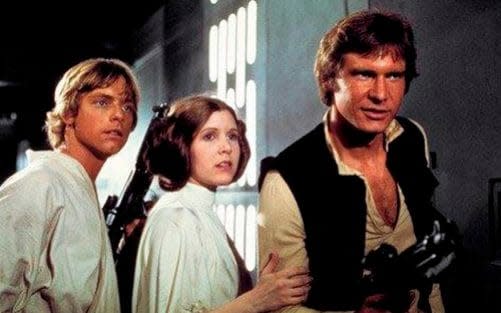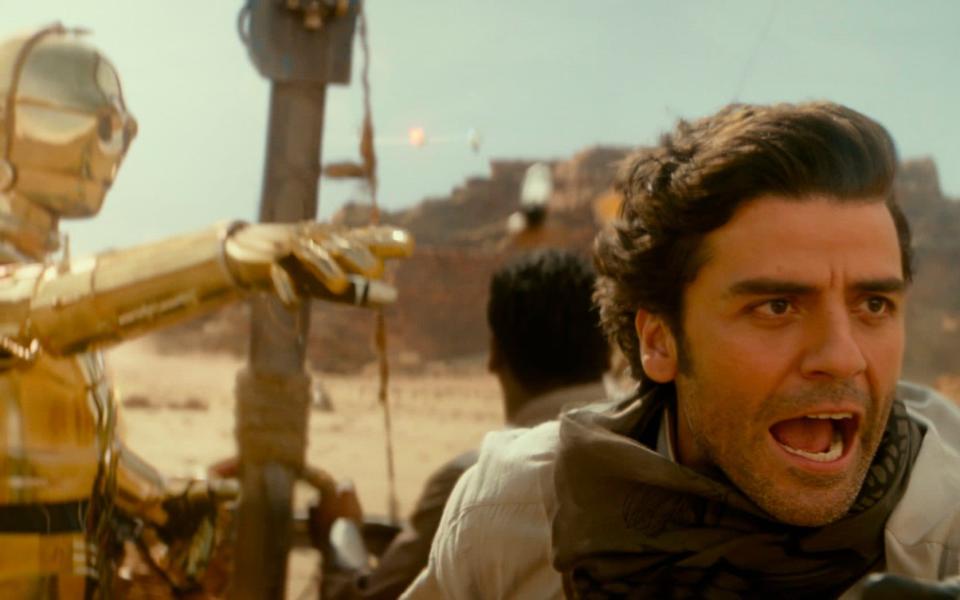Beyond May the Fourth: Join Robbie Collin for a live chat on the future of Star Wars

Every year, Star Wars Day falls on May the fourth, for reasons I hope don’t have to be spelled out here. But did you know we have Margaret Thatcher to thank for it? When the then-Conservative leader became Prime Minister of the United Kingdom on that date in 1979, Saatchi & Saatchi, the advertising agency behind her campaign, took out a celebratory ad in the now-defunct London Evening News. “May The Fourth Be With You, Maggie,” it trumpeted. “Congratulations.”
Yet it took admirers of George Lucas’s cinema-changing space-fantasy franchise – which at that point encompassed a grand total of one single film – almost another three decades to adopt it.
Fast-forward to 2008, and “Luke Skywalker Day” (as it was known then) was being celebrated by grassroots groups on the newly public social network Facebook, and as soon as Lucasfilm was bought up by Disney in late 2012, Star Wars Day became an officially recognised annual event.
Yet the 2020 edition is unusual in one key respect: it’s the first since the Disney takeover on which fans haven’t been able to look forward to the release of a specific new Star Wars film.

Yes, we can revisit – and perhaps reappraise – The Rise of Skywalker, last year’s divisive (and, I think, rip-roaring) saga-closer, which landed today on the Disney+ streaming service. And of course there’s also The Last Jedi to endlessly re-litigate in the comments section below literally anything I write. But otherwise, for the first time in eight years, the Force is like a millpond. Never mind great disturbances: there’s barely a ripple.
That’s not to say there are no Star Wars projects in the works. Far from it, in fact. Marvel super-producer Kevin Feige is developing a standalone feature for Lucasfilm (though nothing is known about it as yet), and Sleight director JD Dillard is mapping out another with Marvel TV writer Matt Owens, which is reportedly set on the Sith planet of Exegol.
As of the Knives Out press tour at the end of last year, The Last Jedi director Rian Johnson was still shaping a standalone trilogy featuring all-new characters and worlds. (Another new trilogy, to be overseen by the Game of Thrones show-runners David Benioff and DB Weiss, was abandoned last year due to the pair’s commitments at Netflix.)

And of course there are the Disney+ series: two more seasons of The Mandalorian, Jon Favreau’s outstanding samurai-western hybrid serial; a show tracking Ewan McGregor’s Obi-Wan Kenobi between the events of the prequel and original trilogies, an espionage saga centred on Diego Luna’s Rogue One intelligence officer Cassian Andor, supervised by Tony Gilroy; and a “female-centric” drama being developed by Leslye Headland, the co-creator of Netflix’s Russian Doll series, which will unfold on a previously untrodden stretch of the franchise’s timeline.
In other words, there's much to look forward to – but very little concrete sense, either overarching or granular, of what the future of Star Wars actually holds, or when we might see it. There’s certainly no shortage of unexplored territory: the Jedi Order was founded thousands of years before even Lucas’s prequels took place, and there are countless stories suggested by incidental characters and throwaway lines in Episodes I to IX; not least the young Force-sensitive stablehand in The Last Jedi’s spine-tingling final shot.
So where, specifically, should the franchise set a course for next – and how long should it wait before pushing the hyperdrive lever? Join me at 12 noon today in the comments below to swap theories and compare cravings.

